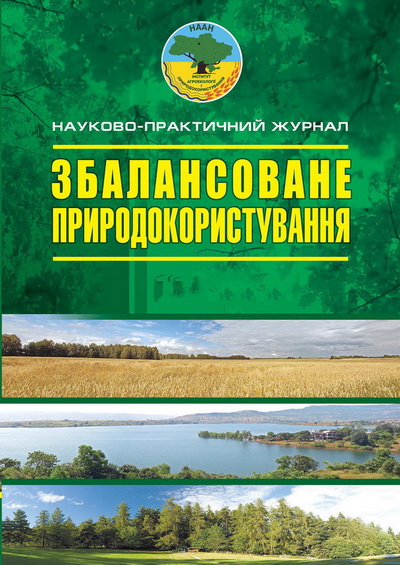INVESTIGATION OF SUBSTRATES OF MINE ROCKS ON THE TERRICONS OF THE DONBASS FOR THEIR AGRICULTURAL RECULTIVATION
DOI:
https://doi.org/10.33730/2310-4678.3.2018.190403Keywords:
landscape, mine dumps, slagheaps, technozem, reclamation, edaphotop, soil, fertility, ecologyAbstract
Technogenic landscapes in the Donetsk region occupy an area of more than 11,000 hectares. They
are technogenic zones of increased danger. Toxic substances migrating from waste heaps affect on all
components of steppe landscapes, changing their natural geochemical features. The actual scientific-applied
problem of in-depth study of the newly created technozems has arisen for the further development
of theoretical and practical bases the restoration of the slagheaps landscapes of Donbas to the level of
natural ones with the aim of raising the level of ecological safety of the environment and economically
expedient use of recultivated areas in agriculture. The purpose of the scientific work is to investigate the
«evolution» of the edaphotopes, which developed on the dumps of coal mines, to compare them with the
results obtained and to determine the trends in the development of edaphotopes.
The study of the conditions for the development of edaphotopes was carried out on different dumps
of coal mines, the exploitation of which was completed in the 1970s, according to methods common in
agrochemistry and ecology. The methodological basis of the study is the following methods: a systematic
approach, statistical and comparative methods, methods of analysis and synthesis. The article compares
the data diagnostics of the mine dumps in 1975 with the samples of 2017. According to the edaphic characteristics,
the mine dumps are infertile substrates both for the creation of forest vegetation and for use in
agriculture. Over time, they improve their composition and properties somewhat, but they will remain
infertile substrates for a long time.
Dominant on the dumps of coal mines of Donbass are complex plant groups on sod embryos, in which
gradual humus accumulation takes place. Over time, the percentage occupied by the humus-accumulative
embryosome will grow. During the «aging» of the dumps, the acid compounds are neutralized and the
soluble salts are washed out. This was facilitated by many factors, including the reformation of dumps,
the creating a layer of soil that «removes» the acid reaction of the environment, planting both woody and
herbaceous plants. In industrial conditions of Donbass, where the vegetation cover is depleted and insufficient
for regeneration, phytorecultivation is the most economically profitable and ecologically safe,
which, besides the function of increasing productive land, plays a sanitary and phytocompensatory role.
The introduction of scientifically based economic methods of land reclamation with the aim of returning
the territories which was extracted to agricultural production contributes to the improvement of the ecological
situation and aesthetics of the natural areas of the steppe zone of Ukraine.
Issue
Section
License
- The authors reserve the right to authorship their work and pass the journal the right to publish this work under a Creative Commons Attribution License license, which allows other persons to freely distribute the published work with the obligatory The authors of the original work and the first publication of this magazine.
- The authors have the right to make independent additional agreements on the nonexclusive dissemination of the work in the form in which it was published by this magazine (for example, to post work in the company's electronic storage or to publish as a monograph) , subject to the first publication of the link to this journal.
- Journal policy allows and encourages the placement of authors on the Internet (for example, in the repositories of institutions or on personal websites) manuscript work as to the presentation of this manuscript to the editorial board and during its editorial processing, as it contributes to The productive scientific discussion and positively affects the efficiency and dynamics of citation published work (see The Effect of Open Access).


